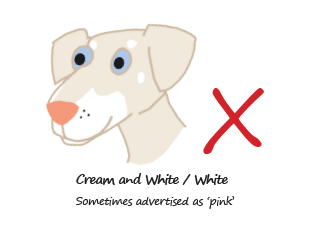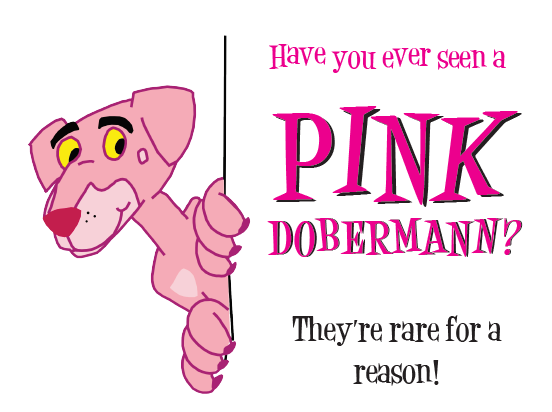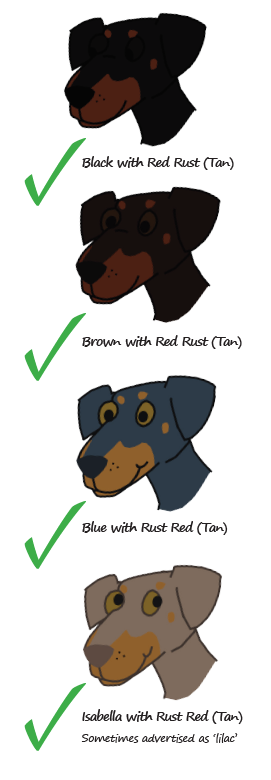The Dobermann has four accepted colours - Black and Red Rust (Tan), Brown and Red Rust (Tan), Blue and Rust Red (Tan), and Isabella and Rust Red (Tan). However, most responsible breeders will do everything possible to only breed Black and Browns. This is because there are additional health risks with coloured Dobermanns. The Blue and Isabella (aka Fawn) are dilutes of the black and brown coats, and amongst other things are prone to colour dilution alopecia. This is where they are born with normal condition coats, but as they get older the hair becomes brittle with large bald patches.
All White Dobermanns today descend from the first documented albino Dobermann, Sheba, who was born in 1976.
Albinism is the result of a genetic mutation and therefore, is not a sign of an animal that is going to be in perfect health. They can have skin and sight problems, and poor vision may lead to fear biting. Some countries have even banned the breeding of this gene mutation and breeders are encouraged not to purposely breed for this colour.
Physical problems can include:
• Skin Cancer - All animals with albinism are predisposed to skin cancer, as well as being extremely sensitive to the sun.
• Immune System Disorders - This can cause a wide variety of problems, as the dog is not able to sufficiently fight off germs and disease like others are.
• Retinal Abnormalities - The blue eyes are caused by optic nerve mutation which can also cause other retinal problems. These may lead to vision problems, even total blindness, and they often squint in bright light due to photosensitivity
• Deafness - An issue with all white and albino animals



